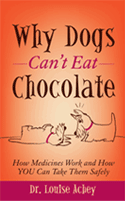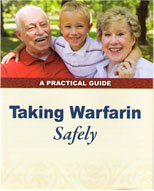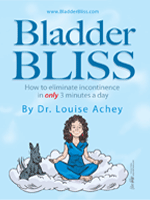Q: I always get a couple of pages of printed information about my medicine every time I get it refilled, but the print is so tiny I can barely make out the name of my pills at the top. There’s so many side effects listed, if I read them all I would be too scared to take it. What’s the point?
The Food and Drug Administration (FDA) wants consumers like you to know certain important facts about your medicines to help you take them safely. Written information is considered one of the best ways to give out information because it’s something you can hold in your hand and look at, not just hear once at your doctor’s appointment or at your pharmacy, forgotten by the time you get home. Written information goes with you to where you store and take your medicines.
The printed sheet given to you along with your medicine is called a consumer medication information sheet, or CMI. Although the FDA has published guidelines about what type of information should be included in a CMI, it doesn’t directly regulate or enforce any of them, relying instead on private companies to hire people to write the information for each medicine.
If you think the print on your information sheet or CMI seems small, you are not alone! The first thing most people notice about their CMI is how microscopically small the type is. The bigger issue is, how USEFUL is it to you? Did you actually stop and read your CMI? Even more important, though, is was it worth reading? Did it make sense to you?
The FDA is very concerned about how useful CMIs are. In a study published in 2010 by the University of Florida College of Pharmacy, professional shoppers filled prescriptions for two common medications in a sampling of 365 pharmacies across the country. The CMIs they collected were tracked and compared to recommended guidelines set out by the FDA.
This particular study found that getting a CMI sheet was nearly universal: 94% of the pharmacies in the study dispensed one with each prescription. The quality of the information was less consistent, with less than 50% of the CMIs provided by the pharmacies considered as meeting the guidelines for being easy to read or understand. Some leaflets gave only a few sentences of information, while others covering the same medicine went on for several pages.
According to FDA guidelines about CMIs, they should include 8 criteria: the drug name and what it’s used for; any contraindications and what to do about them; specific directions about how to use it, monitor your progress and get the most benefit; any special precautions and how to avoid harm while using it; include symptoms of serious or frequent side effects and what to do if they happen; encourage you to ask questions; be up to date and scientifically accurate; be easily understandable and legible.
What do you do with your CMI? Do you stop, sit down and read it word for word, look it over quickly as you scan for useful tidbits, or do you just pitch it directly into your trash? A significantly improved one-page CMI may be on its way to you soon.
In April 2013, Catalina Health announced the results of a pilot of a redesigned one-page patient handout based on a prototype recently developed by the FDA. The new one-page sheet, also called a Patient Medication Information sheet or PMI, was developed through a collaborative workgroup including the FDA, the Medical Cognition Laboratory at Duke University, 2 medical schools, a pharmacy school, 3 pharmaceutical manufacturers, the Regenstrief Center for Healthcare Effectiveness Research, and Catalina Health. The new format PMI has separate boxes for key topics such as “Uses,” “Important Safety Information,” “How to Take,” “Get emergency help if you have,” and “Possible side effects.”
The new PMI was piloted by a major retail pharmacy chain in California and Michigan for 3 medications over an 8-week period in late 2012. Over 90 per cent of customers surveyed found the new PMI useful and readable. Catalina Health plans expansion into Phase 2 of the project later this year.
Leave a Comment
July 7th, 2013. Filed Under:
medicines.
Tags:
car sickness,
dramamine,
ginger,
meclizine,
motion sickness,
pharmacognosy,
Prevention magazine,
scopolamine,
The Honest Herbal,
Varro TylerQ: I’ve tried looking straight ahead when riding in cars to avoid motion sickness, but it doesn’t seem to help. I’m still miserable. Is there something else you can recommend?
Summer is a traditional time for vacations and travel. According to Robert Louis Stevenson, author of Treasure Island, “To travel hopefully is a better thing than to arrive.” When you suffer from motion sickness it’s a relief to arrive because it means you’ve finally stopped moving!
When I was in grade school, my parents would pack up our Pontiac station wagon with six kids, various changes of clothing, sleeping bags, and a picnic basket of fried chicken. We’d drive over rivers and through cities and woods to visit my grandparents who lived 4 miles north of Ocean Shores on the Washington coast. Although I have fond memories of good times playing along the Pacific Ocean, getting there was hours and hours of agonizing nausea punctuated with frantic cries of “Dad, Dad, pull over!” Even today, I still avoid KFC fried chicken.
I was liberated from my back seat misery when Varro Tyler, Ph.D. came to Seattle in 1983 to speak at a pharmacy conference. He was one of the authors of my pharmacy textbook called Pharmacognosy, which is the study of drugs from natural sources, and at that time he was writing a monthly column on herbs and natural products for Prevention magazine and had just published his book The Honest Herbal.
Dr. Tyler changed my life by suggesting ginger for prevention of motion sickness. I went home and immediately bought some crystallized ginger I found in the spice section of my local grocery store and used my apothecary scale to determine the appropriate size for an adult dose, which turned out to be just slightly bigger than a full size tablet of aspirin. Because it was chewable I could take it anywhere, and I found its sweet-hot taste pleasant. With ginger I no longer turned 10 shades of green when flying from Yakima to Seattle over the Cascade Mountains, and could even read a book in a moving car.
Along with ginger for motion sickness there is also acupressure, three different oral medicines available without a prescription and a scopolamine patch. Each of the medicines works best if taken at least 30 minutes before you start moving.
Sea-Bands® are elastic bands worn around your wrist that activate a pressure point inside your wrist that can prevent motion sickness. Ginger can be used as fresh root, capsules, or in the crystallized form. Ginger is given as 500mg-1000mg of powdered root every 4-6 hours as needed. Crystalized ginger is twice the weight of the powdered form so 1000mg would be the equivalent dose. Ginger ale, ginger tea and gum don’t have enough ginger to provide reliable relief.
Dramamine® has two different formulations, the original one and a less drowsy formula. The original formula of Dramamine® contains dimenhydrinate, a close cousin of diphenhydramine, commonly known as Benadryl®. Either one can be useful for motion sickness prevention but cause drowsiness and need to be taken every 4 to 6 hours.
Meclizine is the best tolerated medicine for motion sickness. It is sold as Bonine®, the less drowsy formulation of Dramamine® and as generic meclizine. When buying meclizine be careful to select the 25mg of the two strengths on the shelf. Meclizine is inexpensive, chewable, only rarely causes drowsiness and has convenient once daily dosing. I now prefer meclizine 25mg chewable tablets when I travel.
If these non-prescription options don’t quell your queasiness, the scopolamine patch (Transderm Scop®) is also available. Worn behind the ear for 2-3 days at a time, it is more effective for motion sickness but causes more side effects like fatigue, blurred vision, dry mouth, constipation and urinary retention. Talk to your medical provider if it is safe for you, especially if you take medicine for nerve pain or overactive bladder.
According to T.S. Eliot, “The journey not the arrival matters.” I hope one of these options help you enjoy your journeys by plane, boat or automobile unencumbered by the distress of nausea from motion sickness.
Leave a Comment



